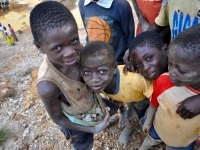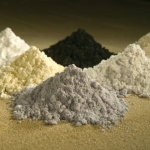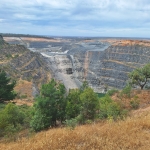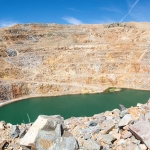How Glencore Sources Cobalt from Child Labor in the Democratic Republic of the Congo

Some three quarters of the word’s supply of cobalt comes from the Democratic Republic of the Congo, where children as young as 10 years old help extract the metal from hand dug shafts in the Tilwezembe mine in Katanga province.
Tilwezembe mine is owned by Katanga Mining, a subsidiary of Switzerland-based Glencore (the name is an abbreviated version of "Global Energy Commodity Resources"), the world's largest commodities company. Founded by Marc Rich (a U.S. citizen who was on the Federal Bureau of Investigation's Top Ten list for tax evasion but was pardoned by President Bill Clinton) it merged with Xstrata, another Swiss mining company in 2013. Today it is the world’s largest commodities company with sales revenue of just shy of US$218 billion in 2023.
Technically, the Tilwezembe mine, which sprawls over a three square mile radius (7.5 square kilometers) in the southern province of Katanga, just north of Zambia, was closed in 2008 because of low prices of metals. In reality, small scale miners still dig for the two metals and sell the ore they extract to “buying houses” who sell it straight on to major mining companies like Glencore, according to eyewitnesses.
“I have seen thousands of women with babies strapped to their backs inhaling toxic cobalt dust day in and day out, 10-year-old children caked in toxic filth, exposing themselves to toxic cobalt. And the ore that these children are digging that has cobalt in it often has traces of radioactive uranium," Siddharth Kara, author of "Cobalt Red: How the Blood of the Congo Powers Our Lives," and an associate professor at the University of Nottingham, who has visited dozens of mining sites in Congo, told independent news site Democracy Now!. “So, the public health catastrophe on top of the human rights violence on top of the environmental destruction is unlike anything we’ve ever seen in the modern context.”
He described how the youngest children scrape at the ground to gather what they can. Older boys are required to dig tunnels while older girls rinse and sieve the ore to separate the dirt and the valueless stones from the cobalt-bearing stone.
For its part, Glencore denies that it buys such cobalt. "Glencore does not purchase, process or trade any artisanally mined cobalt or copper, We do not tolerate any form of child, forced, or compulsory labour in our supply chain," the company said in a press statement.
But Kara says that this is not true. “Glencore may never admit it, but they rely on penny-wage artisanal cobalt mining to boost their production at minimal expense,” Kara told Democracy Now!. “There is no way to disaggregate which cobalt was pulled out of the ground by an excavator and which cobalt was pulled out of the ground by hands of a child. And any company that claims otherwise is either recklessly ignorant of the truth on the ground or they’re dealing in falsehood.”
In December 2019, International Rights Advocates, a non-profit based in Washington D.C., brought a lawsuit against Apple, Google, Tesla and Microsoft, seeking damages on behalf of 14 Congolese families.
Among the plaintiffs were the families of “James Doe 2,” (a pseudonym for a 16 year old boy who was killed on January 14, 2019, when a tunnel collapsed at Tilwezembe. The boy, who was the eldest of eight siblings, started working in the mine work after his father was seriously disabled in a mining accident.
The plaintiffs also included families of two other boys who also died at Tilwezembe: “Joshua Doe 2” who died in a September 27, 2017 accident and “James Doe 12” who died in May 2018 at age 14, as well as the families of “John Doe 4,“ “John Doe 6“ and “John Doe 9“ who were injured at Tilwezembe.
(While Glencore was named in the lawsuit 52 times, International Rights Advocates did not sue the company.)
The case was dismissed by the Court of Appeals for the District of Columbia Circuit in March 2024. "This decision, though disappointing, will not deter us from our mission to protect vulnerable children and ensure that multinational corporations do not benefit from forced labor and human trafficking," said Terry Collingsworth, executive director of International Rights Advocates, in a press release.
Glencore has, however, been successfully prosecuted for bribery in the DRC. It paid out $180 million to the government in December 2022 to dismiss lawsuits over corrupt payments between 2007 and 2018. It has also paid even bigger fines over the same corruption to the U.S. government.
"Glencore paid bribes to avoid government audits. Glencore bribed judges to make lawsuits disappear. At bottom, Glencore paid bribes to make money – hundreds of millions of dollars. And it did so with the approval, and even encouragement, of its top executives," said Damian Williams, a prosecutor for the Southern District of New York, in a press release, announcing the settlement in May 2022.
In 2020, several cobalt mining companies set up a group called the Fair Cobalt Alliance (FCA), to try to clean up the industry in DRC. Members include both Glencore as well as Zhejiang Huayou Cobalt.
Zhejiang Huayou Cobalt Another major company that extracts cobalt in the DRC is Zhejiang Huayou Cobalt of Tongxiang, Zhejiang province in China. It has a subsidiary named Congo DongFang International Mining, which has been accused of buying cobalt from small scale miners, including many that use child labor as young as six years old, who work for as many as 12 hours a day, for salaries as low as $1 or $2 a day. “This is what we die for: Human rights abuses in the Democratic Republic of the Congo power the global trade in cobalt”, a 2016 report by AfreWatch and Amnesty International, documents the exploitation of the mine workers, based on interviews with 87 current and former cobalt miners, 17 of them children, from five mine sites in southern DRC. “I would spend 24 hours down in the tunnels. I arrived in the morning and would leave the following morning … I had to relieve myself down in the tunnels,” Paul, a 14-year-old orphan, who started mining at the age of 12 told researchers. He said that prolonged time underground made him constantly ill. “My foster mother planned to send me to school, but my foster father was against it, he exploited me by making me work in the mine.” |



